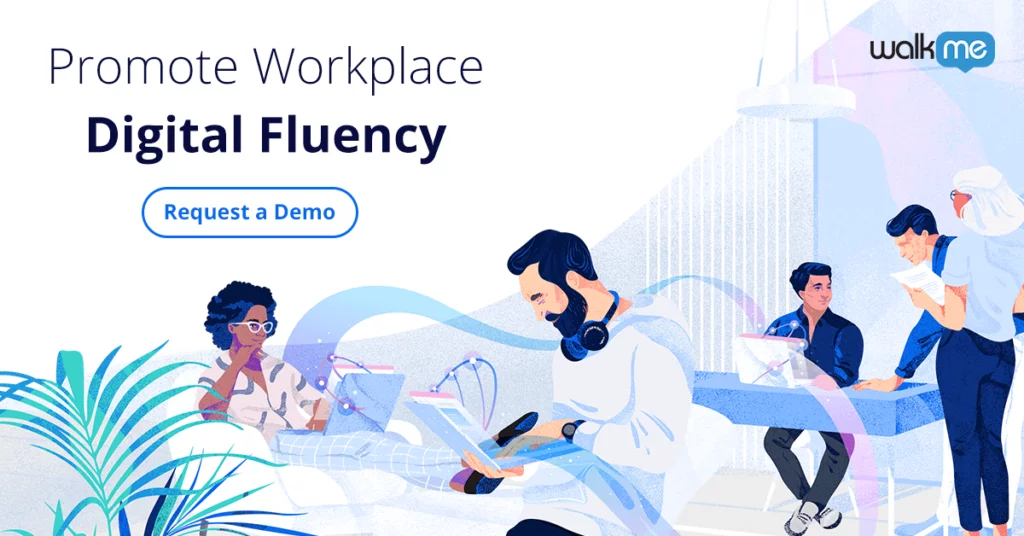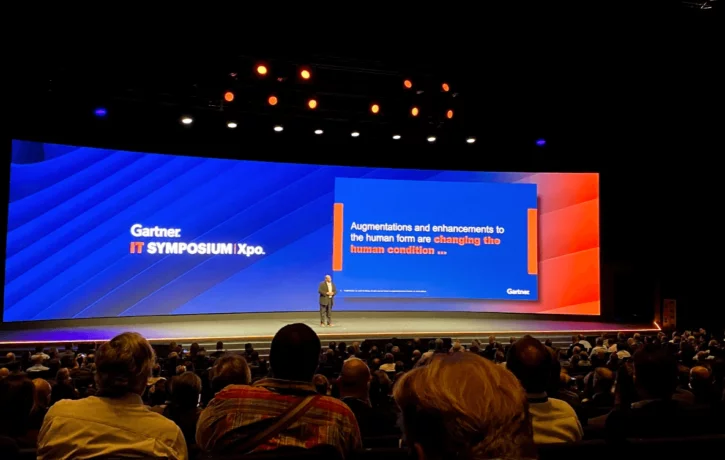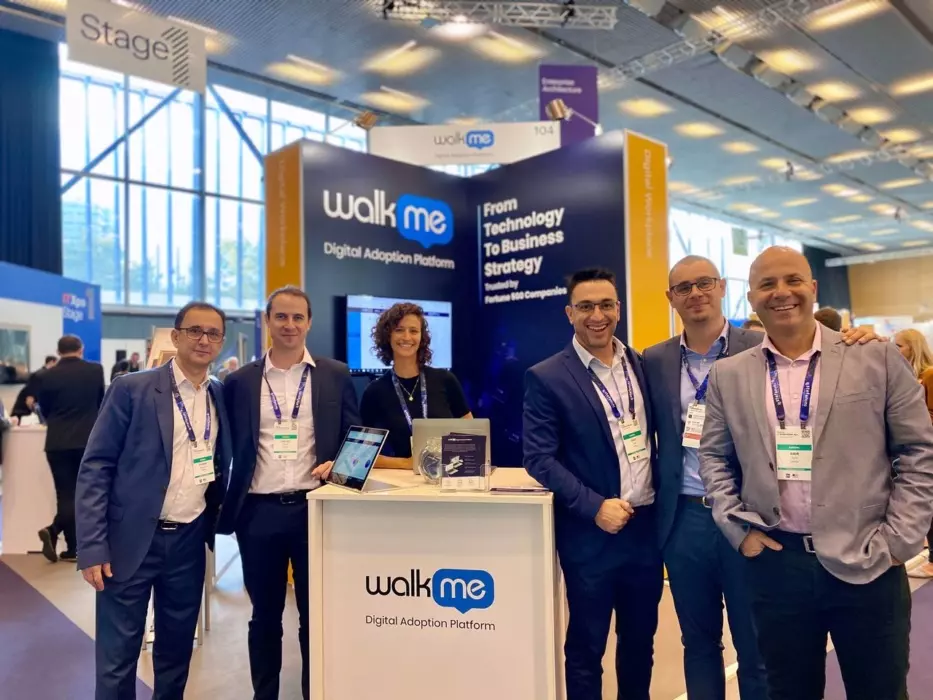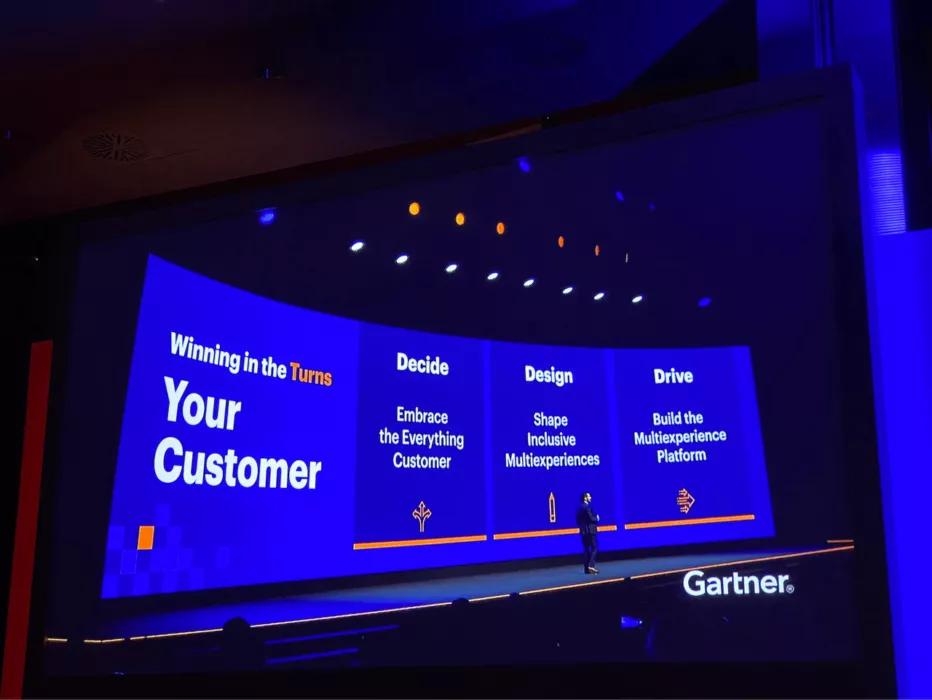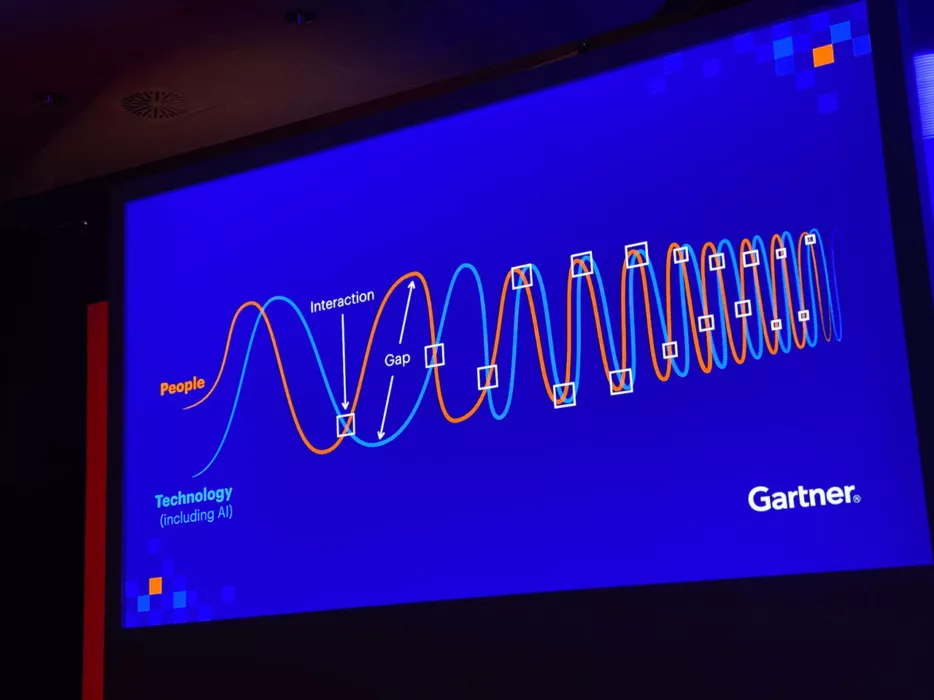In Barcelona, Spain, in early November, our corporate team attended the 2019 Gartner IT Symposium/Xpo. This prestigious annual tech conference hosts top analysts, tech leaders, and business innovators worldwide.
WalkMe was thrilled to be part of such a valuable, content-packed event. Ofir Bloch, our Director of Research and Analyst Relations, and the rest of the WalkMe team returned to Tel Aviv inspired and motivated by the many insights on digitalization, business organization, and the future of technology.
If you couldn’t make it, here are three takeaways from the 2019 IT Symposium Xpo that you don’t want to miss.
1. The CIO is moving from defense to offense
The CIO’s evolving role is a topic that we at WalkMe have been following closely. Tina Nunno, Gartner Distinguished VP Analyst, drove the point home perfectly during her opening keynote presentation by analyzing the newly organically elevated role of the CIO.
Tina explained that there is an important shift taking place in organizations due to digitalization. Traditionally, the CIO was tasked with overseeing and developing the IT portfolio. Now, the CIO role has risen into a more strategic position, in which he or she is expected to provide critical direction related to the integration of digital with the overall business strategy.
The more digitalized a company becomes, the more responsibility the CIO has.
This is an inevitable evolution for all organizations. However, it is up to each CIO individually to awaken to their potential and drive their repositioning within their companies.
This shift requires CIOs to take full accountability for their successes and failures and demand the same from their peers within their organizations.
Bottom Line:
The CIO’s new proactive action points should include leading presentations by confidently sharing and taking responsibility for their successes and holding both themselves and other departments fully accountable for their projects.
Through clear role definitions in the organization, and by using a more active and strategic approach to communication and initiatives, the new CIO can be an offensive player.
photo credit: Gartner
2. The multi-experience era of digital UX has begun
The tide has officially turned, and people are no longer expected to be tech-literate. Rather, tech is expected to be people-literate.
Valentin Sribar, Senior Research VP at Gartner, explained that the digital element of a business has evolved into a multi-experience sequence often involving different interfaces (mobile app, computer, live service or store), and many different types of technologies (automation, voice recognition, virtual reality, AI, chatbots, etc) all with the goal of maximizing UX.
This means the bar has been raised yet again for all companies, not just tech companies, to stay on the cutting edge of digitalization. Using top technology is the only way to ensure the highest-quality UX across all interfaces and platforms, but this is introducing new demands on businesses.
For example, many non-tech companies have begun acquiring design studios to improve digital experience. When a company suddenly has a design team, in order to utilize it efficiently, they need to also conduct extensive UX research. This is demanding a new and growing organizational change, in which businesses must quickly enable and support high-quality design research and implementation teams in companies that previously did not support them.
Bottom Line:
In order to continually meet the new standard of UX, companies should: design and build device-specific experiences and not try to build one experience for all platforms, and fully integrate the concept of ‘inclusive design.’ Originally inclusive design and compliance was intended for populations with disabilities, but it actually creates a better experience for everybody, because it maintains the simplicity and ease of use of a product, which is the essence of excellent technology.
3. Digital Adoption Solutions are trending and the demand continues to rise
Gartner’s Hype Cycle for CRM Sales Technology illustrates the lifespan of emerging digital technology: how it is applied, received, and eventually replaced or integrated into core sales processes. It is a continuous and rapidly evolving study, as technologies are always changing and influencing one another.
A consistent thread throughout the IT Symposium Xpo was the persistent need to address the one question that isn’t going away: how can businesses prepare to constantly update, upgrade, and integrate new complex digital tools?
Ed Gabrys, Gartner Senior Director Analyst, explained the growing gap between humans and technological capabilities in his presentation. As digitalization increasingly encompasses all aspects of human life, the space between us and our tools becomes greater as new complexities challenge the user. The expanded capabilities of advanced technology also impose greater usability obstacles. It’s imperative that we find a path to bridge this gap.
From our team’s many conversations on the floor, with attendees and analysts alike, we gained candid insight into the ever-growing challenges that companies across all industries are facing with digital transformation.
One CIO of a highly prestigious global law firm shared the seemingly disconnected challenges he faced while scaling digital transformation across his company. It was gratifying and exciting for the WalkMe team to illuminate how all of the problems he described were part of one unified issue — a lack of an efficient digital adoption strategy.
With a comprehensive approach to ensuring digital adoption, including a Digital Adoption Platform, he would be able to solve multiple complex problems all at once. A better digital employee experience, more effective software onboarding, and greater productivity were within reach.
Bottom Line:
Rather than relating to digital transformation as a one-time transformation with a beginning and an end, it’s more accurate to understand it as a continual business objective.
When you begin to view digital transformation as the new normal, it’s easy to identify a tool that supports its continual development. A digital adoption solution provides the training, support, and engagement required to provide ongoing assistance and ensure full integration of new technology into employees’ workflow.
Until next year…
This year’s topics at the IT Symposium Xpo were varied and multidimensional, but we especially appreciated the focus on revolutionary CIOs and IT executives. It’s an exciting time for these roles and the expo insights on organizational change, data and analytics, and digital transformation initiatives were phenomenal. We’re looking forward to our next Gartner event.
For more information on the event, and for links to the speakers, take a look here.
